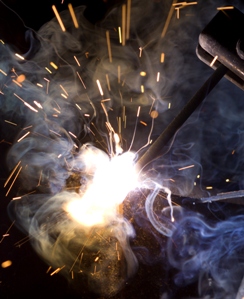 Before you tackle that next piece of metal, John Leisner, Miller Electric Company, outlines the five most common welding mistakes.
Before you tackle that next piece of metal, John Leisner, Miller Electric Company, outlines the five most common welding mistakes.
Poor preparation. “Farmers too often fail to adequately prepare the metal before welding,” says Leisner. “This includes grinding or removing paint, rust, dirt, and other surface contaminants. It also includes fully grinding out cracks, oftentimes beyond what is immediately visible.”
He says if you fail to properly clean the material to be welded, you will end up with a contaminated and weakened weld. If cracks are not fully ground out, material will continue cracking after the weld has been made.
Thick materials. “Material over ¼ inch should usually be welded in multiple passes,” Leisner notes. “Trying to get it all welded in one pass by cranking up the current and moving slowly over the piece will result in the filler metal not properly bonding to the base metal (cold lap).”
Worn-out metal. “Sometimes a piece of metal gets weakened to the point that welding it isn't going to solve the problem,” says Leisner. If a piece has broken more than once in or near the same place, that's an indicator the metal needs to be reinforced.
Electrode and wire selection. The three most common welding processes on the farm are stick, MIG, and flux-cored. No matter which one you use, selecting the right electrodes and wire as well as proper care for each is important.
“Different stick electrodes are suited to different applications, and using one in place of another can result in poor welding results,” Leisner says. “Certain sticks are designed only for DC welding. Some self-shielding flux-cored wires are not suitable for multipass welding.”
Self-shielding flux-cored and solid-wire welding require different polarity settings at the power source.
“A good all-purpose stick electrode is 6011. A good all-purpose solid MIG wire is a .035 S6,” Leisner says. “Talk to your welding distributor for good recommendations on wire selection.”
Proper care for electrodes and wires is also key. “Wires can rust if left in wet or humid environments,” he cautions. “Some electrodes need to be stored in sealed containers to keep moisture out, or they will need to be baked in a rod oven.”
Wrong technique. “Push vs. pull, gun/electrode angle, travel speed, and arc length can all lead to problems,” Leisner says. For example, if the rate of travel is too slow, the pool of weld metal will deposit an excess of weld metal.
Source: Agriculture.com
Source: www.agriculture.com






